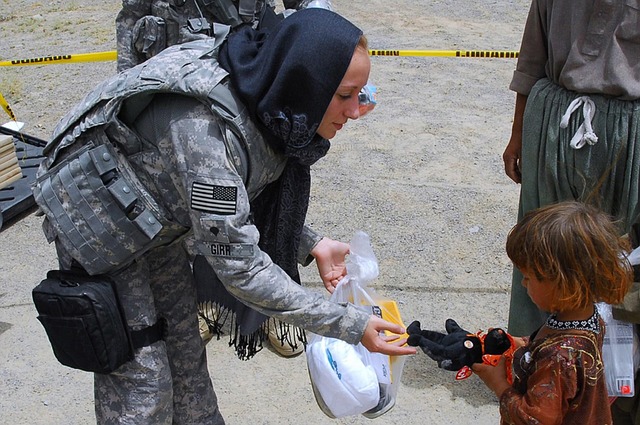Diana Winston from MARC, UCLA, offers a guided meditation podcast on “kindness” and she maintains that we can make a real difference in the world by spreading kindness at a time when there is so much local, national and international conflict. Her loving kindness meditation cultivates mindfulness and a gratitude mindset for the practitioner and helps to diffuse anger and unkindness in the world. We know from experience that if we extend a smile or thoughtfulness to another person, it is often reciprocated, just as abruptness and rudeness stimulates a reciprocal response. Kindness is contagious and has a momentum of its own that leads to diffusion.
Diana reminds us that mindfulness involves being open and curious while accepting what is. Openness extends to being thoughtful towards people we find “difficult” or who constantly annoy us. Diana asserts, with conviction, that kindness is a natural property of the heart that we extend to others and also our pets. Kindness in her words is “the desire for another person t be happy” and has a mental, emotional and behavioural aspect. Mentally, it involves thinking kind thoughts and positive wishes for others; emotionally, it entails feeling kindly towards others and appreciating their uniqueness; and behaviourally, it means engaging in “acts of kindness”.
Diana’s guided meditation focuses on “radiating loving kindness” through our thoughts and emotions and involves creative visualisation, the use of imagery. She argues that kindness is inherent in mindfulness practice because it involves being willing to show up, to accept what is (including individual differences) and acknowledge connectedness to everybody and everything. In her experience, not everyone will warm to this form of meditation as it involves visualising a “lake of kindness” . However, for people who are not particularly visual, she offers the suggestion to focus on the positive thoughts and emotions behind the process.
Guided meditation
Diana begins the meditation in the usual way encouraging us to adopt a relaxed and comfortable posture and to take a number of deep breaths to enable us to relax and focus on the mindfulness activity. One of the aims of mindfulness mediation is to really focus on the present moment, avoiding obsessing about the past or becoming preoccupied with planning future activity (my main source of distraction!). Diana moves onto encouraging us to focus on our own breathing in an accepting, non-controlling way. She suggests that our focus can be on the up and down movement of our abdomen or chest or the in and out flow of air through our nose. She follows this activity with a focus on the sounds in the room or external environment, again just being open to what is sounding not trying to identify the source or interpret the meaning. Diana suggests that if we become distracted (everyone does, even the mindfulness experts like Diana), we can re-focus on one of the anchors mentioned, e.g. our breathing or sounds.
Diana begins the visualisation process after about five minutes of silent meditation. She encourages us to visualise walking with a companion (someone we admire or a close friend) beside a scintillating blue lake, whose radiance touches everything around it. She calls this the “lake of kindness”. After a short while, we enter the inviting waters with our companion, experiencing sensations of gentleness, warmth and immersiveness of the “kindness waters” – sensations that elicit feelings associated with kindness. Now, we imagine our friends, who are on the bank of the lake, joining us in the water so that they too are immersed in kindness as the lake expands through displacement.
The challenging part of the guided meditation is envisaging other people, who we are not positive about, joining us in the “lake of kindness” – dissolving to some extent our reticence to be with them and encouraging us to extend kindness to them. We are then all enveloped in the “kindness waters”. We can then envisage the kindness waters moving into the ocean; up the rivers of villages, towns and cities; and extending to all the waterways of the world thus “suffusing the world with kindness”.
Reflection
Kindness is natural but we become absorbed in our thoughts, negative emotions, stereotypes and sense of superiority – thus precluding us from radiating warmth and kindness to others. It behoves us to reflect on times when we have omitted to show kindness and to consciously undertake acts of kindness, such as sharing a meal with someone who usually eats alone. We can genuinely make a difference in the lives of individuals and everyone we come in contact with, if we approach them with kindness in our heart, even through the simple act of smiling or sharing a book.
As we grow in mindfulness and kindness through loving kindness meditation, we can make a real difference in our own lives and spread kindness in the world. For example, you often see people who have been given the opportunity to enter a line of traffic, extend this kindness to someone else further along the road.
Mindfulness meditations help us to reflect on our words and actions and their impact and reminds us that we are all connected as we share the fragility and vulnerability of the human condition. It is a useful practice to reflect at the end of each day and think about our “acts of kindness” as well as when we overlooked an opportunity to be kind to someone.
_________________________________
Image by Pete Linforth from Pixabay
By Ron Passfield – Copyright (Creative Commons license, Attribution–Non Commercial–No Derivatives)
Disclosure: If you purchase a product through this site, I may earn a commission which will help to pay for the site, the associated Meetup group, and the resources to support the blog.


